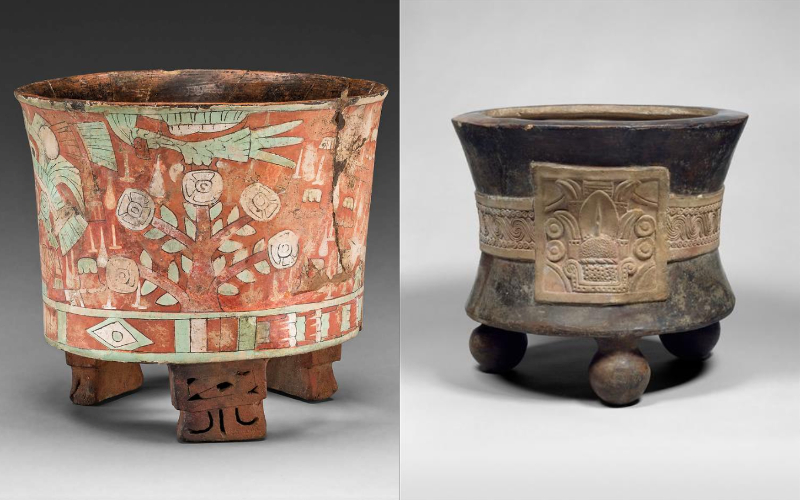This large vessel’s hourglass shape is reminiscent of the shape of ceremonial braziers, which were closely associated with the religious architecture in Tenochtitlan, the capital of the Aztecs.
Three hollow, bulbous feet with clappers support the heavy, thick-walled vessel, which made noise when it was moved.
A wide band with interlocking scrolls and circular frames decorates the middle of the vessel.
On the front, there is a cartouche with the date glyph “4 Reed,” which may allude to the year 1431 A.D., when Tenochtitlan’s Main Temple underwent its third expansion.
Multiple seams on the band and cartouche indicate that they were manufactured in molds.
They are made of the same reddish-brown burnished slip and natural clay color as the rest of the vessel.
Ceramic braziers, some up to three feet tall and bearing deity images frequently, were set up in front of or outside of altars.
They were used to burn offerings of skeletal remains of people and animals as well as fragrant latex incense. It was thought that the offerings to the gods were carried by the rising smoke.











